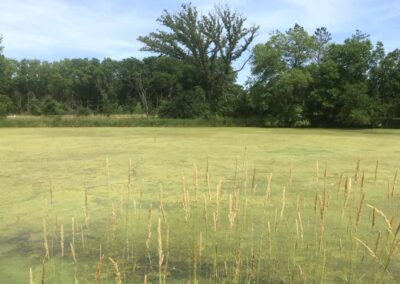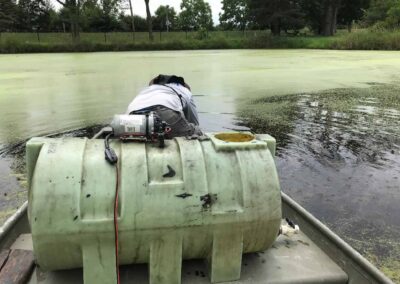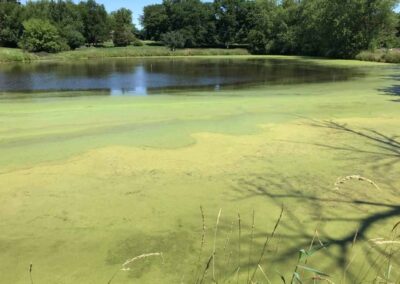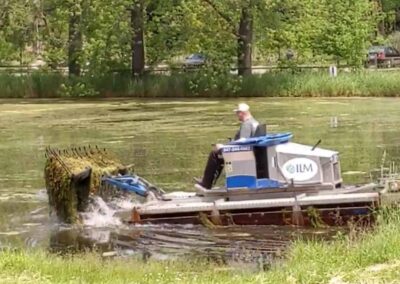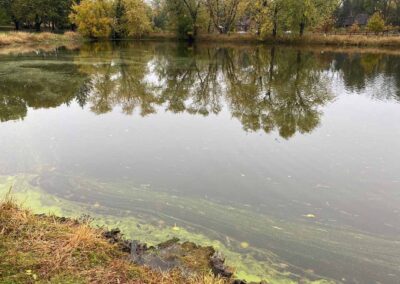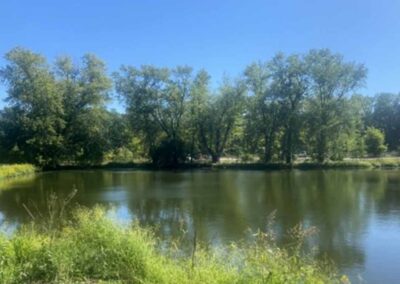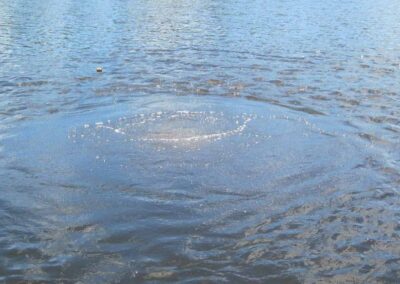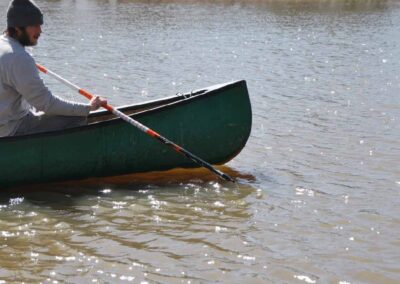PROJECT
Featherling Park Pond
Pond Reset
Location
Introduction
Services
Details
Lakes and ponds need to achieve some levels of ecological balance to be managed properly. If a pond is left to degrade over many years, it is often difficult to get it back in balance. Fetherling Park Pond in Lake Barrington was dominated by invasive aquatic plants, including Eurasian watermilfoil and curly-leaf pondweed. Floating duckweed, watermeal, and algae covered approximately 90% of the pond, preventing oxygen from mixing into the water.
Given the amount and diversity of material growing in the pond, ILM used nearly every tool available to bring it back to life. Monthly visits to treat the algae were scheduled. Herbicides were applied to kill off the invasive plants. A nutrient deactivation product was applied to bind up nutrients feeding the invasives. It should be noted that not all plants and algae in a pond can be treated at one time to avoid depleting the oxygen as material decomposes. Dissolved oxygen levels are always tested before treatments.
Despite the aggressive approach to management, the pond still needed to be balanced. This is sometimes the case when invasive plants and algae aggressively overtake a water body. A mechanical removal of the plant material allowed ILM to pull the plants and algae out of the water. Mechanical removal resulted in immediate visual appeal but, more importantly, removed the nutrients bound in the plants out of the system, allowing for a “reset” of the pond. Subsequent treatments were effective, and the pond came back to life.
That same year a bathymetric study was performed to better understand the depth and volume of the pond to see if it could support fish populations. The study showed very little sediment accumulation and that the pond was an average of six feet deep. It is recommended that ponds be at least eight feet deep to support fish. Therefore, considering the depth of the pond and the potential impact on the ecosystem, stocking was not recommended.
The following year four diffusers were installed to help with circulation. Diffusers sit on the bottom of the pond and push water to the surface so it can mix with atmospheric oxygen. This process of mixing oxygen into a water body is always a great step towards improving pond health. In addition, if fish are present, diffusers help support fish populations by ensuring a healthy oxygen level in the water, which is crucial for their survival.

